The Fantasy Fan November 1933 Read online
Page 2
Then one of the dogs lying in a doorway sprang suddenly and omitted asharp bark. At the same moment a dark cloud apparently obscured thesun. In a short time it had passed unnoticed save for the dog. But hisowner--an old crone in a voluminous black hood--peered intently at theclear and vacant sky, and started chattering in an excited tone. Soonthe whole population was out of doors looking upwards at that whichcould not be seen yet which cast a deep shadow. Nothing was to beperceived in the expanse of blue, yet upon the square cobblestones ofthe quaint little village an irregular black form wavered back andforth. Then it grew larger. Whatever it may have been, it wassettling. The people drew back afrightened. Slowly the swinging motionceased, and the thing drew near. A deep, heavy panting was distinctlyaudible, much like that of a great beast, and with a dull impact asthough it was of great weight, it alighted upon a grassy plot beforethe Chancellor's house. For a long time it lay there, resting. Andstill nothing could be seen save the indentation of the grass noraught heard but the heavy breathing.
Then, to the terror of the white-faced and nervous citizens, it roseon giant feet and tramped down a lane. Thud.... Thud.... Thud....Thud.... The sound grew monotonous in its deliberation. Before itspath lay a sleeping hound. It was lifted as if in a vast claw, andvanished among horrid rending sounds. A single drop of blood fleckedthe earth.... Its taste momentarily sated, the thing paused andturned.
It took some moments for reason to replace the stark terror of thetownsfolk. Then there was a mad and frantic rush for the nearesthouses. Those to first gain entrance barred the doors upon theircomrades. In a moment the street was apparently bare--save for theunseen monster.
All that afternoon and night it pried at doors, scratched at roofs,muzzled windows and upset fruits-carts inquiringly. But the people ofDroom had built well. It did not gain entrance during the night,although few slept, when they heard the constant breathing beforetheir homes, and the dull thumping sounds as it wreaked its maliceupon the shops of the marketplace.
It was high noon before any dared unbar their doors and venture forth.Nothing unusual greeted their blanched faces, and silently,apprehensively they stole to their tasks. Soon all activity againcommenced.
The horror had gone.
* * * * *
Come over to "Our Readers Say" and "The Boiling Point" and join in thecomment.
THE BOILING POINT
Herewith we continue the Ackerman-Smith debate, which is waxing hot.
"The Ackerman-Smith controversy assumes all the aspects of a madcomedy. To assail and reprehend the writings of Clark Ashton Smith isas preposterous and futile as a dwarf transporting a huge mountainpeak upon the tip of his tiny finger. Either Forrest J. Ackerman isdaft or an imbecile or a notoriety-seeking clown and knave. ClarkAshton Smith stands alone in the realm of present-day weird andfantastic literature, and, therefore, above all his contemporaries. Heis still King: and has yet to be dethrone."--Robert Nelson.
"Personally, I thought that 'The Light From Beyond' was very good, andI saw nothing weird about it. It was fantasy and not stf., but some ofthe greatest classics of so-called science fiction have been almostpure fantasy. Witness: Merritt's 'Snake Mother' and 'Moon Pool,' andTaine's 'Time Stream.' Ackerman's objections to this were particularlyobnoxious to me, as I thought it one of the best stories ever written.Certainly, there should be something more to science fiction thanrays, machines, villains, heroines (composed of lipstick and leg, asMr. Barlow rather bitterly expresses it), as has been stressed sogreatly of late. There should be an element of fantasy, strongcharacters, and a well-developed plot in addition. The lack of thoseis why so many weird story lovers (like Mr. Barlow) can find so muchfault with stf. I do not blame him. I, myself, as a reader, will stopreading stf when the fantasy element is dropped completely." WilliamCrawford.
QUESTIONNAIRE
Here are the answers to the questions we asked you in September. Howmany could you answer without looking them up?
1. David H. Keller's first story was "The Revolt of the Pedestrians"in the February, 1928 issue of Amazing.
2. Tom Jenkins was the leading character in "In 20,000 A.D." and "Backto 20,000 A.D." by Schachner and Zagat, in the Sept., 1930 and March,1931 issues of Wonder, respectively.
3. A. Hyatt Verrill lays most of his plots in Central and SouthAmerica.
4. "Through the Veil" by Leslie F. Stone in May, 1930 Amazing, gave ascientific explanation of the fairy myth.
5. Clement Fezandie wrote the "Dr. Hackensaw's Secrets" stories, aseries in the old Electrical Experimenter, and early issues of Scienceand Invention.
* * * * *
Not so much in rebuttal to Mr. Ackerman as to toss another stickonto the fire, let me confess that the scientific fiction type ofliterature seems to me among the dullest written. I avoid wheneverpossible, except in such cases where it passes the boundaries intothe weird and horrible. Of course, the work of Wells is an exception.This may be blasphemy to most of your readers, but there it is. Toreturn to Mr. Ackerman's complaint: I fail to see why it is any moredeplorable for Wonder Stories to publish Clark Ashton Smith'shorror story than for Weird Tales to publish Edmond Hamilton'spseudo-scientific effusions. And it was Amazing Stories that had thehonor to publish "The Colour Out of Space" by America's master of theweird, Lovecraft. Richard E. Morse.
A DREAM OF THE ABYSS
by Clark Ashton Smith
I seemed at the sheer end: Albeit mine eyes, in mystery and night Shrouded as with the thick profundity of death, Or as if underneath Lethean lentors drowned, Saw never lamp nor star nor dead star's wraith of light, Yet seemed I at the world's sheer end; And fearfully and slowly I drew breath From silent gulfs of all uncertainty and dread, Precipitate to Nadir from around; Nor trusted I on any side to tread One pace, lest I should overstep the brink And infinitely and forever sink Past eye-shot of the Cyclopean sun, When from the bulwark of the world adown oblivion, He on the morrow should stare after me.
Swift from infinity, The black, unformed, enormous Fear that lives between the stars, Clutched with the cold, great darkness at my heart. Then from the gulf arose a whispering, And rustle as of Silence on the wing, To stay and stand Anear at my right hand: What Powers abysmal, born o' the blind black air, What nameless demons of the nether deep That 'scape the sun and from the moonlight live apart, Came and conspired against me there I heard not, ere the whispering Ceased, and a heavier darkness seemed to spring Upon me, and I felt the silence leap And clasp me closer, and the sweep Of all the abyss reach up and drag Body and feet from the crumbling uttermost crag To the plumb and infinite emptiness unknown: Nor knew I, in tumult of the rapid air, If me did Azrael or Abaddon bear, Or if I fell alone.
HOW TO COLLECT FANTASY FICTION
by Julius Schwartz
Part Three
Volume one number one of Mind Magic, a magazine dealing with theoccult, was June, 1931. It lasted until the end of the year, December,1931 issue. (The last two issues were published under the title of MySelf Magazine.) Another science fiction magazine, Miracle, Science andFantasy Stories, disappeared after issuing two numbers, the April-Mayand June-July, 1931. The same publisher of this magazine, HarryHershey, printed some good fantasies in Ghost Stories. Exact dates ofthis magazine are unknown to the writer, but the magazine gave up itsghost sometime in 1932.
Hugo Gernsback, editor of Wonder Stories, put out two magazines thatexpired within a year. The first, Air Wonder Stories (July, 1929 toMay, 1930) dealt with aviation of the future, mostly. It combined withScience and Wonder Stories in June, 1930 to form the present WonderStories. The other, Scientific Detective Monthly, appeared in January,1930, and after changing its name to Amazing Detective Tales in Junecollapsed with the October, 1930 issue.
Oriental Stories, companion magazine to Weird Tales, burst forth onthe stands September 15, 1930. Some excelle
nt weird and oriental talesmade their appearance in this magazine, which afterwards, in January,1933, became Magic Carpet. Black Cat magazine (published around 1924)had some weird and scientifiction stories. These issues areparticularly hard to obtain.
CLUB NEWS
The Fantasy Fan Fraternity, announced in our September issue, is nowwell under way, with members in nine different states. The purpose ofthe organization is to foster fellowship among science-fiction fans bymeans of correspondence, or where possible, by personal contact inlocal groups or chapters.
The first such chapter has been established in New York City, wherethe Scienceers, first fan club of its kind, is functioning as thelocal Fraternity branch. Meetings are held every week; and membershipis open to all metropolitan fans. Further information about this groupmay be obtained from the secretary, Allen Glasser, 1610 UniversityAvenue, Bronx, New York.
Any reader wishing to join the national F.F.F., or to found a branchin his community, should send six cents in stamps to Mr. Glasser, atthe above address, for a membership card and a list of other memberswith whom to correspond. This small charge, to cover necessaryexpenses, is the only cost of enrollment into the Fraternity--anation-wide association devoted solely to the interests of fantasyfans. Why not be one of us?
* * * * *
Next month Mr. Schwartz, in "How to Collect Fantasy Fiction," takes upthe seven Munsey magazines and the English periodicals containingfantastic fiction. Don't miss part four.
* * * * *
'The Fantasy Fan' is the ONLY fan magazine for the readers of weirdfiction. Tell your friends about it, and urge them to subscribe.
TRUE GHOST STORIES
(Part Two--Conclusion)
At one time there was a woman of rank living in London who was hatedby everyone. When she died, she was not missed, but her spirit hauntedher home every night. After a number of years someone saw her approachone side of a room and paw at a wall. Then she disappeared. The wallwas removed and many valuable papers were discovered, including onethat proved she had murdered her husband. Her ghost never appearedafter that. It seemed that at last she had repented her evilexistence, and was trying to redeem her soul.
The guard of the London prison tower was making one of his nightlyrounds when he discovered a peculiar light emanating from the utmosttower. Upon climbing up he noticed that it was an unearthly blue-whitelight which permeated everything within, but seemed to have no pointof origin. Within this baleful gleam he saw the spirits of those thathad died in the London tower through the ages--warriors of the time ofHenry the Eighth--and noblemen of all periods. They were marching in asolemn procession. Suddenly everything faded and the guard foundhimself in utter darkness.
There are many other ghost stories of London--such as phantom handsappearing above the water of the Thames, sworn to by witnesses to begospel truth--but our reason forces us to reject them.
Recently, the noted Weird Tales author, Elliott O'Donnell, releasedhis book, "Ghosts of London," which relates further tales of thisnature.
THE END
SCIENCE FICTION IN ENGLISH MAGAZINES
by Bob Tucker
(Series Three)
An all-science-weird magazine started in England to last for just oneissue. The title was "Argo Weekly." The number contained various stfstories concerning everything from prehistoric animals to the "End ofthe World."
A late September number of "The Wizard" carried a fair story ofanother Martian invasion entitled "Raiders from the Red World." Theinvaders landed among the native tribes of Africa, instead of New YorkCity, the usual landing place. And, incidentally, they were not slugs,giants, or etc., but just ordinary human beings.
"The Skipper" published a humorous story named "Ginger Snapp." In thistale, an old professor invents a contrivance that emits a ray whichdisintegrates metal by the push of a button. More rays! Theprofessor's son is surprised to see his dinner disappear whilemonkeying with the mechanism.
As a rule, English magazines have covers that would make Buffalo Billor Nick Carter quit work. They are very "dime novelish" at times, andgo to extremes to amaze the reader.
A request has come in for a female stf enthusiast, who wouldcorrespond with American readers, so here she is, to you who wish aforeign penpal: Miss Molly Upchurch, 139 Byron Rd., Small Heath,Birmingham, 10, England.
* * * * *
Join "The Fantasy Fan Fraternity." See the "Club News" in this issuefor complete information.
MY SCIENCE FICTION COLLECTION
by Forrest J. Ackerman
Part Three
Reposing in a futuristic box are ninety-six autographs. Cummings,Flagg, Olsen, Repp, the three Smiths, Taine, Keller, Breuer, Hamilton,Merritt, Coblentz, Burks, Williamson, Farley, Meek, Paul, Morey,Wesso, Verrill, Leinster--and half a hundred more. Also, there is aspecial collection of scientifilm actors' autographs. These are moredifficult to obtain, and some necessitate writing abroad, but to dateI have "The Frankenstein Monster," the heroine of "Tarzan," J-21 andLN-18 of "Just Imagine," the director of "By Rocket to the Moon" and"Metropolis," "Dracula," Roxor of "Chandu," and many others toonumerous to mention. Tho not a part of the collection, it may proveinteresting to readers that I have seen in person "Dr. Jekyll and Mr.Hyde," "Dracula," "Dr. Moreau," and "Chandu" (Frederic March, BelaLugosi, Charles Laughton and Edmund Lowe).
I have autographed photographs from Leslie F. Stone, "Doc" Smith, EdEarl Repp, Capt. S. P. Meek, Miles J. Breuer, Victor Rousseau, SewellPeaslee, Charles Willard Diffin, Edmond Hamilton and others. Mr.Wright presented me with a personal sketch of his "Retired CommanderHanson."
I also have photos from the heroine of "High Treason,"Frankenstein--the creator, and Fritz Lang, director of Germanscientifilms.
(Next month Mr. Ackerman tells of his collection of originalmanuscripts.)
CONGLAMITORIAL
Second in the series.... And speaking of the April 1933 Amazing,"Martian and Troglodyte," by Neil R. Jones was printed on the cover,but the story did not appear in the issue. The printing of theeditorial, which took two more pages than hitherto, and some of theDiscussions were increased in size.... The May 1933 Amazing was thefirst one of 86 not to contain part of a serial. The August-Septemberhad none either.... Have you ever wondered what letter of the alphabetauthors pick on most as the first one in the title of their stories(omitting articles 'a,' 'the,' and 'an,')? Of course you haven't.Well, I'll tell you, anyway. An average of one-tenth of all thestories written begin with the letter "M," and another tenth with "S."That is their rating in a collection of over 2000 stories.... So,Amazing is trying to get rid of the word "scientifiction" thatGernsback coined, eh?... By the looks of the contents page of the May1933 Weird, you would think that every story was complete.... The May,1926 Amazing contains two stories by Jules Verne.... And the March1930 Science Wonder had two stories by Frank J. Brueckel.... And youcan find other similar cases, such as the Amazing Annual containingtwo stories by A. Merritt, and the June, 1930 Astounding with two ofDiffin's yarns (one under the pseudonym of C. D. Willard).
* * * * *
If you have any original fan material on hand, we would be pleased tohave you submit it for our serious consideration.
HOW TO WRITE A STF STORY
by Hoy Ping Pong
The first thing to remember in writing a science story is originality.You must have that, so the first things to select for your brain-childis a hero, heroine, and villain. No plot is needed. Or, if you desireone, that can be thot up after the story is finished.
Have your hero a tall, slim, cold, grey-eyed chap, with an iron jaw,and a sturdy body. He also must know all there is to know abouteverything. Now for the heroine; she must be a small, slim blond,blue-eyed, and be a scientist's daughter. That's the big point inoriginality. Nobody has ever thought of her being a scientist'sdaughter before. Now next comes the villain. He must be ta
ll, dark,with snapping black eyes, and a brush across his upper lip. He musthave an impossible name that no one can pronounce, including yourself.I would suggest someone who desires to have world domination. That,also, is original.
The big surprise of your story is this: Your villain must desire theheroine for himself. That is something that is new to STF readers.And, of course, I would politely suggest that the hero also want thegirl. That would make a triangle out of it. The hero must chase thevillain all over the universe, because the villain has the heroine inhis vile clutches. Don't forget the word vile. Nobody has ever usedthat.
Of course, the invaders from Mars arrive on the scene about this time,also desiring world conquest. It would be a nice point of originalityhere to have the villain throw in with the Martians. It wouldn't do tohave the whole army overthrow the enemy. The hero must do it himself,singlehanded.
And, a few death rays can be used in the story. Select a fittingcolor, (some authors prefer pink). I would suggest lavender, whichwould just match the heroine's pocketbook, and have it wipe outmillions by merely a few puffs. However, if you could do it all in apuff and a half, that would merit you another point. Then you musthave the hero invent a ray that stops the lavender death rays. Yellowwould be best for this. It makes such an excellent color scheme.

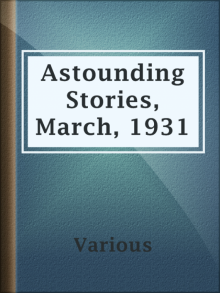 Astounding Stories, March, 1931
Astounding Stories, March, 1931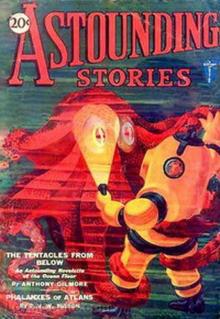 Astounding Stories, February, 1931
Astounding Stories, February, 1931 Futuria Fantasia, Spring 1940
Futuria Fantasia, Spring 1940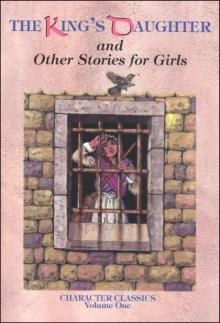 The King's Daughter and Other Stories for Girls
The King's Daughter and Other Stories for Girls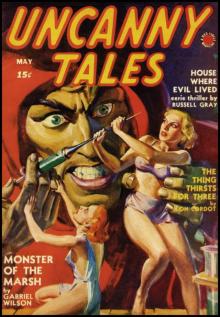 Uncanny Tales
Uncanny Tales Masters of Noir: Volume Two
Masters of Noir: Volume Two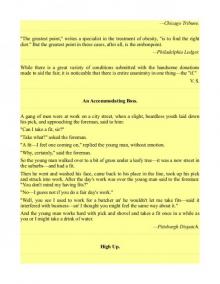 Witty Pieces by Witty People
Witty Pieces by Witty People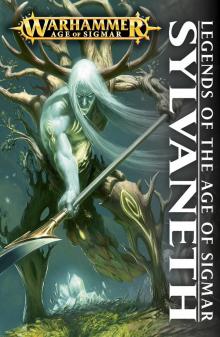 Sylvaneth
Sylvaneth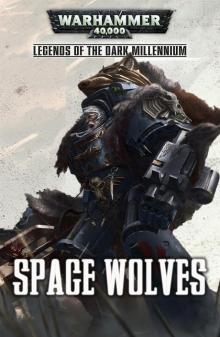 Space Wolves
Space Wolves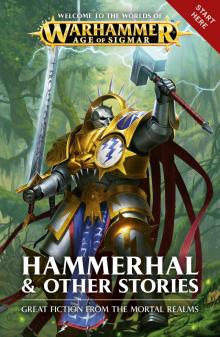 Hammerhal & Other Stories
Hammerhal & Other Stories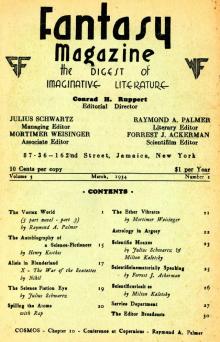 The Fantasy Fan, March, 1934
The Fantasy Fan, March, 1934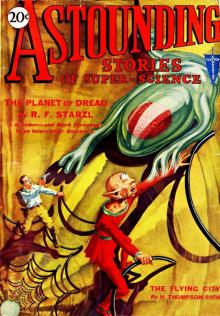 Astounding Stories of Super-Science, August 1930
Astounding Stories of Super-Science, August 1930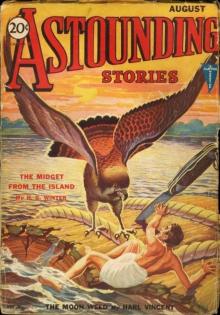 Astounding Stories, August, 1931
Astounding Stories, August, 1931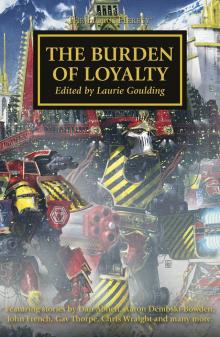 The Burden of Loyalty
The Burden of Loyalty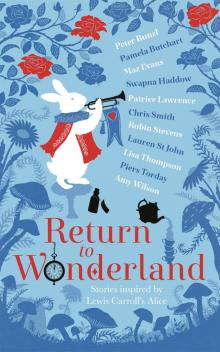 Return to Wonderland
Return to Wonderland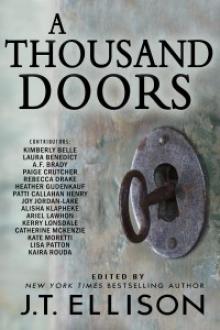 Anthology - A Thousand Doors
Anthology - A Thousand Doors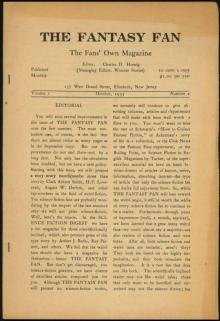 The Fantasy Fan, October 1933
The Fantasy Fan, October 1933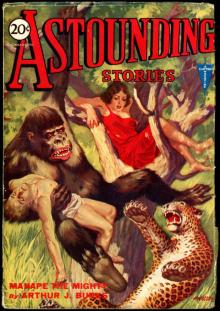 Astounding Stories, June, 1931
Astounding Stories, June, 1931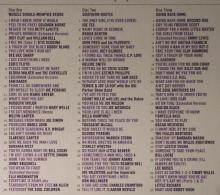 Southern Stories
Southern Stories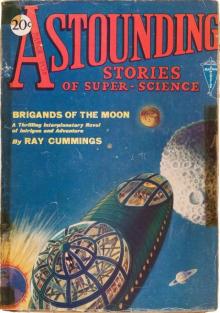 Astounding Stories of Super-Science, May, 1930
Astounding Stories of Super-Science, May, 1930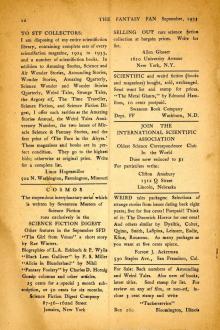 The Fantasy Fan December 1933
The Fantasy Fan December 1933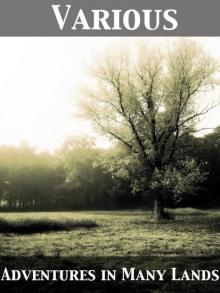 Adventures in Many Lands
Adventures in Many Lands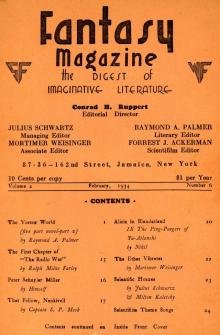 The Fantasy Fan February 1934
The Fantasy Fan February 1934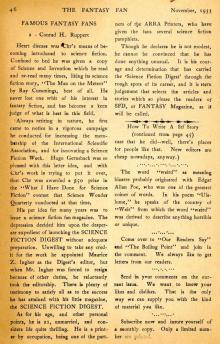 The Fantasy Fan November 1933
The Fantasy Fan November 1933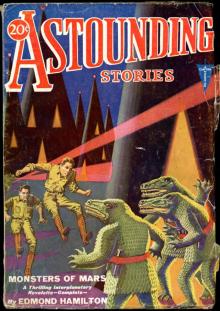 Astounding Stories, April, 1931
Astounding Stories, April, 1931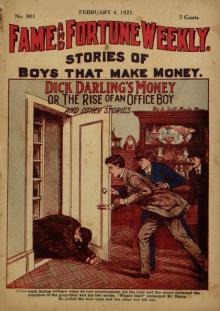 Fame and Fortune Weekly, No. 801, February 4, 1921
Fame and Fortune Weekly, No. 801, February 4, 1921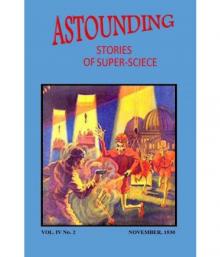 Astounding Stories of Super-Science, November, 1930
Astounding Stories of Super-Science, November, 1930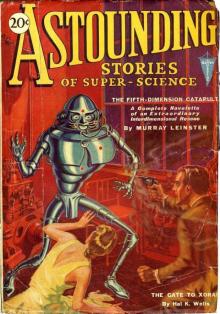 Astounding Stories of Super-Science January 1931
Astounding Stories of Super-Science January 1931 A Monk of Fife
A Monk of Fife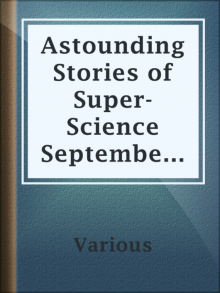 Astounding Stories of Super-Science September 1930
Astounding Stories of Super-Science September 1930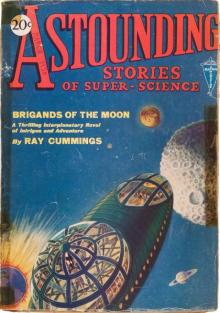 Astounding Stories of Super-Science July 1930
Astounding Stories of Super-Science July 1930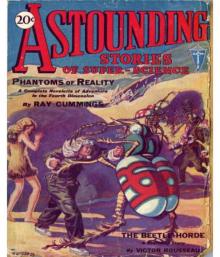 Astounding Stories of Super-Science, June, 1930
Astounding Stories of Super-Science, June, 1930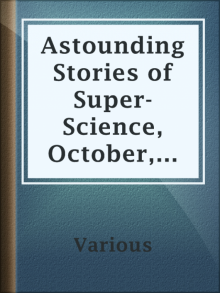 Astounding Stories of Super-Science, October, 1930
Astounding Stories of Super-Science, October, 1930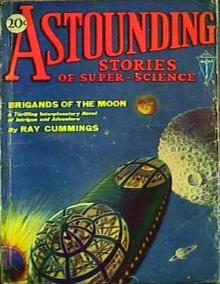 Astounding Stories of Super-Science, March 1930
Astounding Stories of Super-Science, March 1930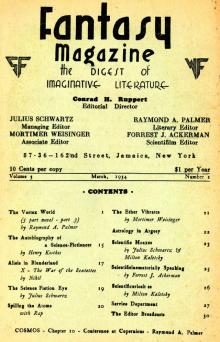 The Fantasy Fan January 1934
The Fantasy Fan January 1934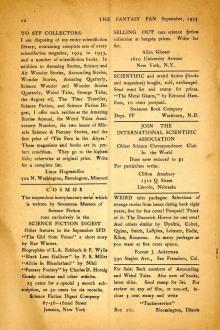 The Fantasy Fan September 1933
The Fantasy Fan September 1933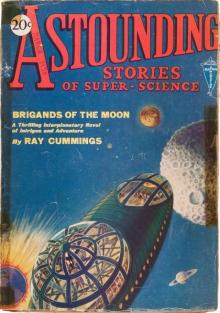 Astounding Stories of Super-Science February 1930
Astounding Stories of Super-Science February 1930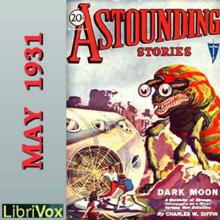 Astounding Stories, May, 1931
Astounding Stories, May, 1931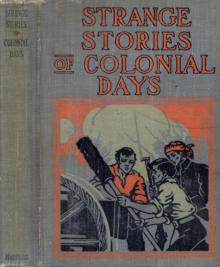 Strange Stories of Colonial Days
Strange Stories of Colonial Days Golden Age of Science Fiction Vol IX
Golden Age of Science Fiction Vol IX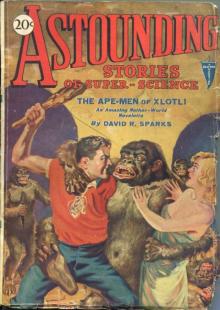 Astounding Stories of Super-Science, December 1930
Astounding Stories of Super-Science, December 1930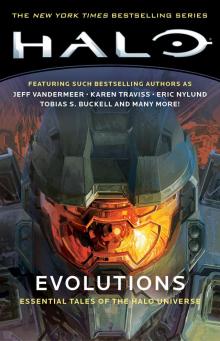 Evolutions: Essential Tales of the Halo Universe
Evolutions: Essential Tales of the Halo Universe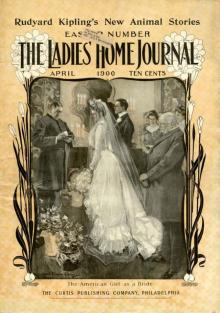 Good Stories Reprinted from the Ladies' Home Journal of Philadelphia
Good Stories Reprinted from the Ladies' Home Journal of Philadelphia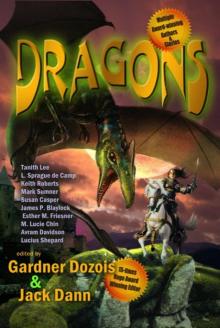 Dragons!
Dragons! Murder Takes a Holiday
Murder Takes a Holiday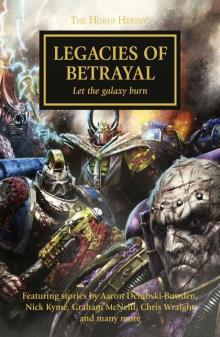 Legacies of Betrayal
Legacies of Betrayal STAR WARS: TALES FROM THE CLONE WARS
STAR WARS: TALES FROM THE CLONE WARS Strange New Worlds 2016
Strange New Worlds 2016 Lippincott's Magazine, August, 1885
Lippincott's Magazine, August, 1885 Golden Age of Science Fiction Vol X
Golden Age of Science Fiction Vol X Hot Stuff
Hot Stuff Santa Wore Spurs
Santa Wore Spurs Paranormal Erotica
Paranormal Erotica Tangled Hearts: A Menage Collection
Tangled Hearts: A Menage Collection Sweet Tea and Jesus Shoes
Sweet Tea and Jesus Shoes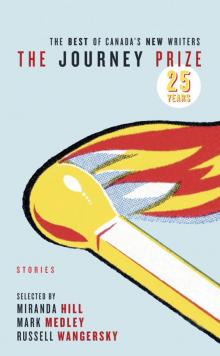 The Journey Prize Stories 25
The Journey Prize Stories 25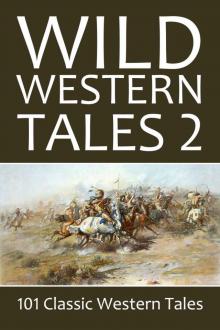 Wild Western Tales 2: 101 Classic Western Stories Vol. 2 (Civitas Library Classics)
Wild Western Tales 2: 101 Classic Western Stories Vol. 2 (Civitas Library Classics) (5/15) The Golden Age of Science Fiction Volume V: An Anthology of 50 Short Stories
(5/15) The Golden Age of Science Fiction Volume V: An Anthology of 50 Short Stories (4/15) The Golden Age of Science Fiction Volume IV: An Anthology of 50 Short Stories
(4/15) The Golden Age of Science Fiction Volume IV: An Anthology of 50 Short Stories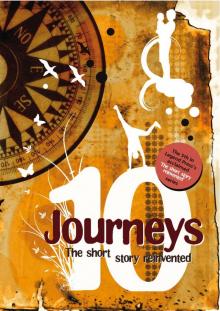 Ten Journeys
Ten Journeys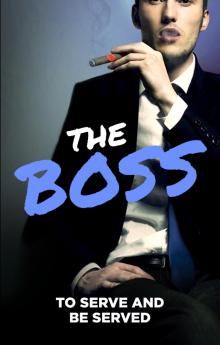 The Boss
The Boss The Penguin Book of French Poetry
The Penguin Book of French Poetry Golden Age of Science Fiction Vol VIII
Golden Age of Science Fiction Vol VIII His Cinderella Housekeeper 3-in-1
His Cinderella Housekeeper 3-in-1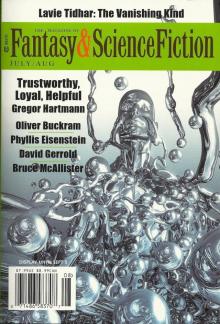 The Magazine of Fantasy & Science Fiction - July/August 2016
The Magazine of Fantasy & Science Fiction - July/August 2016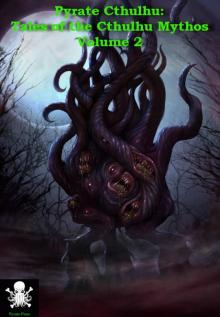 PYRATE CTHULHU - Tales of the Cthulhu Mythos (vol.2)
PYRATE CTHULHU - Tales of the Cthulhu Mythos (vol.2)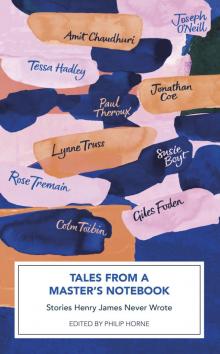 Tales from a Master's Notebook
Tales from a Master's Notebook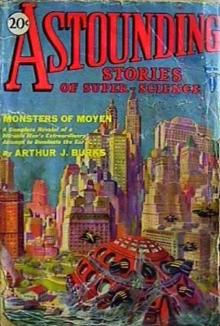 April 1930
April 1930 New Erotica 6
New Erotica 6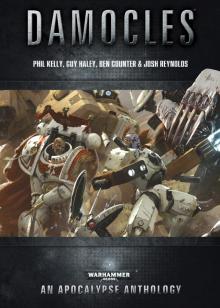 Damocles
Damocles The Longest Night Vol. 1
The Longest Night Vol. 1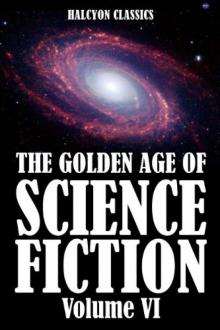 The Golden Age of Science Fiction Volume VI: An Anthology of 50 Short Stories
The Golden Age of Science Fiction Volume VI: An Anthology of 50 Short Stories (1/15) The Golden Age of Science Fiction: An Anthology of 50 Short Stories
(1/15) The Golden Age of Science Fiction: An Anthology of 50 Short Stories Eye of Terra
Eye of Terra ONCE UPON A REGENCY CHRISTMAS
ONCE UPON A REGENCY CHRISTMAS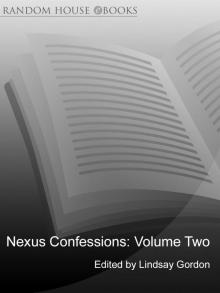 Nexus Confessions
Nexus Confessions Passionate Kisses
Passionate Kisses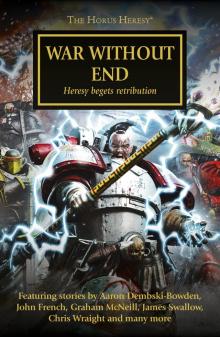 War Without End
War Without End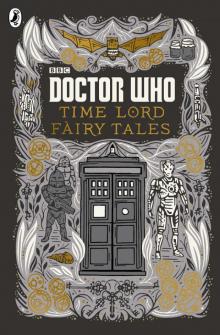 Doctor Who: Time Lord Fairy Tales
Doctor Who: Time Lord Fairy Tales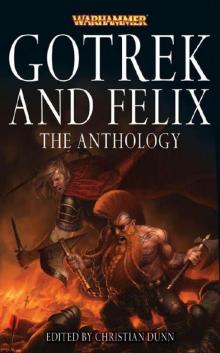 Gotrek and Felix: The Anthology
Gotrek and Felix: The Anthology WESTERN CHRISTMAS PROPOSALS
WESTERN CHRISTMAS PROPOSALS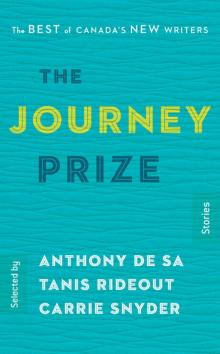 The Journey Prize Stories 27
The Journey Prize Stories 27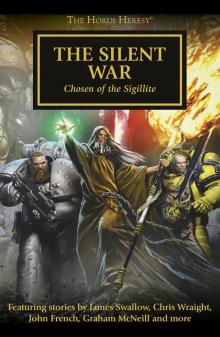 The Silent War
The Silent War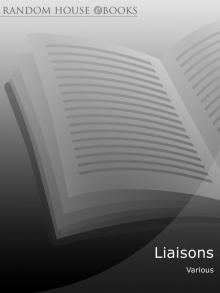 Liaisons
Liaisons Ellora's Cavemen: Tales from the Temple IV
Ellora's Cavemen: Tales from the Temple IV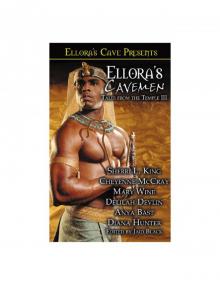 Ellora's Cavemen: Tales from the Temple II
Ellora's Cavemen: Tales from the Temple II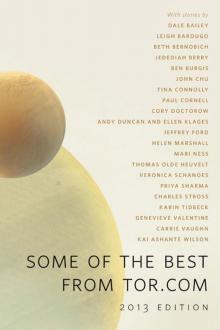 Some of the Best From Tor.com, 2013 Edition: A Tor.Com Original
Some of the Best From Tor.com, 2013 Edition: A Tor.Com Original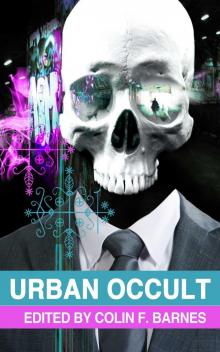 Urban Occult
Urban Occult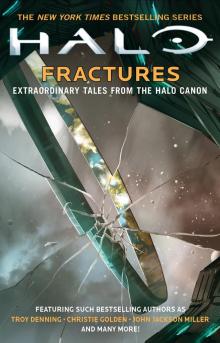 Fractures
Fractures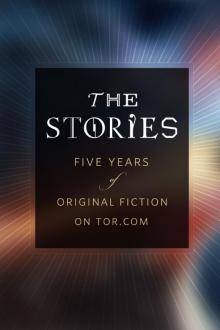 The Stories: Five Years of Original Fiction on Tor.com
The Stories: Five Years of Original Fiction on Tor.com The Penguin Book of Modern British Short Stories
The Penguin Book of Modern British Short Stories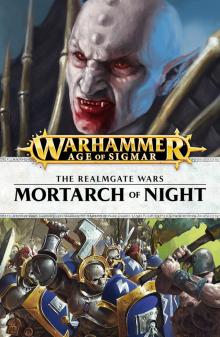 Mortarch of Night
Mortarch of Night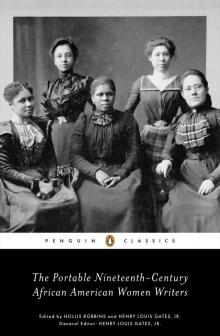 The Portable Nineteenth-Century African American Women Writers
The Portable Nineteenth-Century African American Women Writers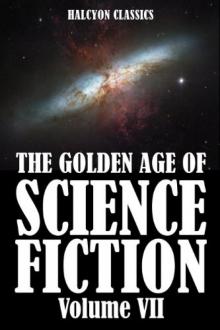 The Golden Age of Science Fiction Volume VII: An Anthology of 50 Short Stories
The Golden Age of Science Fiction Volume VII: An Anthology of 50 Short Stories Holy Bible: King James Version, The
Holy Bible: King James Version, The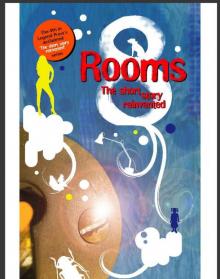 Eight Rooms
Eight Rooms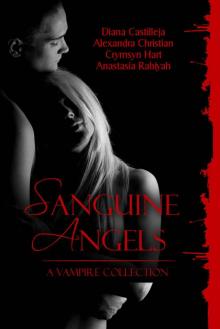 sanguineangels
sanguineangels DarkNightsWithaBillionaireBundle
DarkNightsWithaBillionaireBundle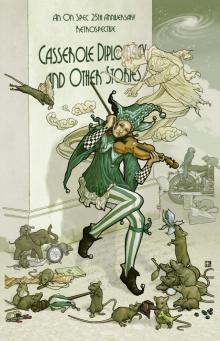 Casserole Diplomacy and Other Stories
Casserole Diplomacy and Other Stories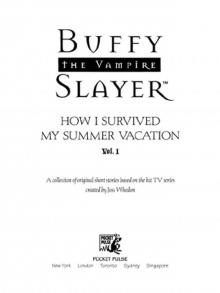 How I Survived My Summer Vacation
How I Survived My Summer Vacation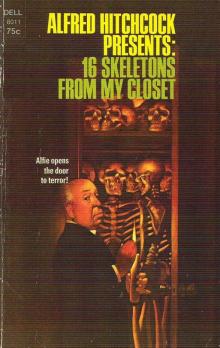 Alfred Hitchcock Presents: 16 Skeletons From My Closet
Alfred Hitchcock Presents: 16 Skeletons From My Closet Lords, Ladies, Butlers and Maids
Lords, Ladies, Butlers and Maids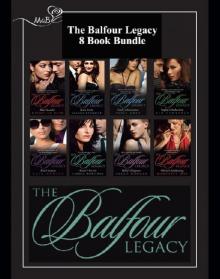 The B4 Leg
The B4 Leg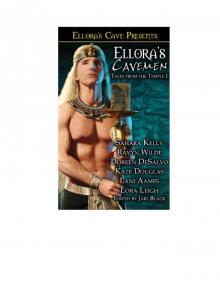 Ellora's Cavemen: Tales from the Temple I
Ellora's Cavemen: Tales from the Temple I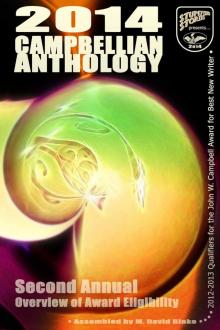 2014 Campbellian Anthology
2014 Campbellian Anthology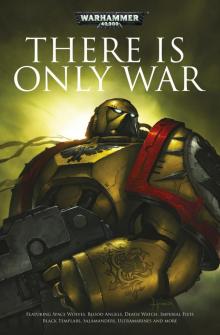 There Is Only War
There Is Only War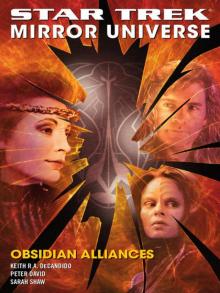 Obsidian Alliances
Obsidian Alliances 12 Gifts for Christmas
12 Gifts for Christmas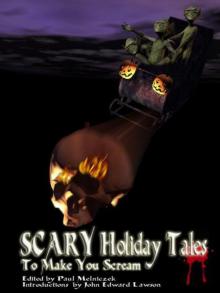 Scary Holiday Tales to Make You Scream
Scary Holiday Tales to Make You Scream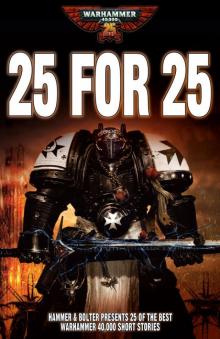 25 For 25
25 For 25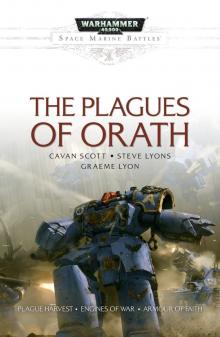 The Plagues of Orath
The Plagues of Orath And Then He Kissed Me
And Then He Kissed Me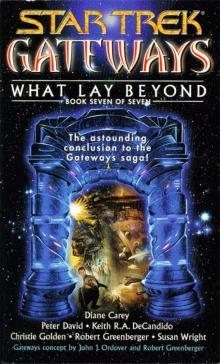 Star Trek - Gateways 7 - WHAT LAY BEYOND
Star Trek - Gateways 7 - WHAT LAY BEYOND Laugh Your Head Off Again and Again
Laugh Your Head Off Again and Again The Balfour Legacy
The Balfour Legacy Golden Age of Science Fiction Vol XI
Golden Age of Science Fiction Vol XI (3/15) The Golden Age of Science Fiction Volume III: An Anthology of 50 Short Stories
(3/15) The Golden Age of Science Fiction Volume III: An Anthology of 50 Short Stories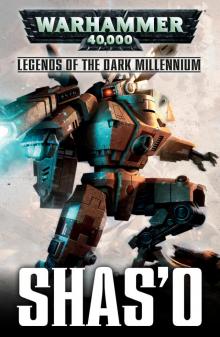 Shas'o
Shas'o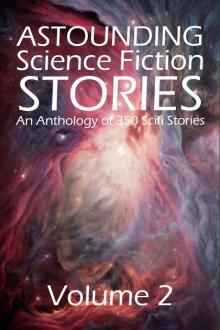 Astounding Science Fiction Stories: An Anthology of 350 Scifi Stories Volume 2 (Halcyon Classics)
Astounding Science Fiction Stories: An Anthology of 350 Scifi Stories Volume 2 (Halcyon Classics)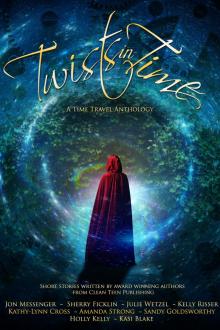 Twists in Time
Twists in Time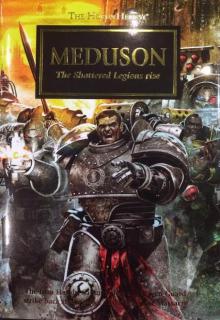 Meduson
Meduson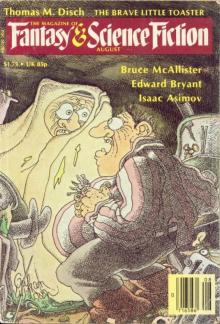 The Magazine of Fantasy & Science Fiction - August 1980
The Magazine of Fantasy & Science Fiction - August 1980 The Journey Prize Stories 22
The Journey Prize Stories 22 The Book that Made Me
The Book that Made Me Angels of Death Anthology
Angels of Death Anthology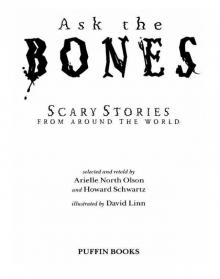 Ask the Bones
Ask the Bones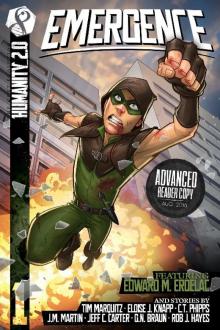 Emergence
Emergence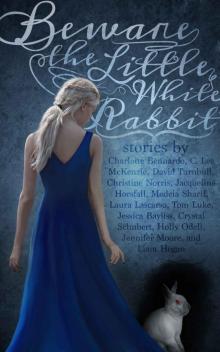 Beware the Little White Rabbit
Beware the Little White Rabbit Xcite Delights Book 1
Xcite Delights Book 1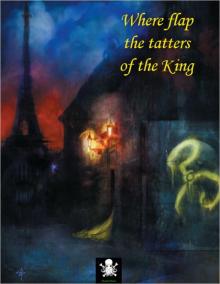 Where flap the tatters of the King
Where flap the tatters of the King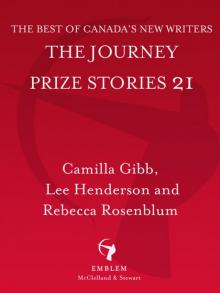 The Journey Prize Stories 21
The Journey Prize Stories 21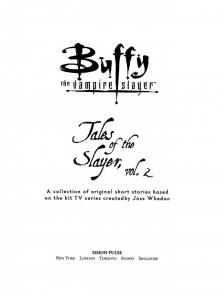 Tales of the Slayer, Volume II
Tales of the Slayer, Volume II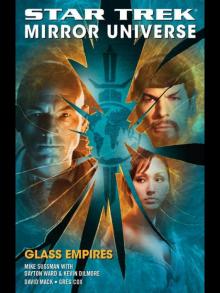 Glass Empires
Glass Empires Golden Age of Science Fiction Vol XII
Golden Age of Science Fiction Vol XII (2/15) The Golden Age of Science Fiction Volume II: An Anthology of 50 Short Stories
(2/15) The Golden Age of Science Fiction Volume II: An Anthology of 50 Short Stories Fairytale Collection
Fairytale Collection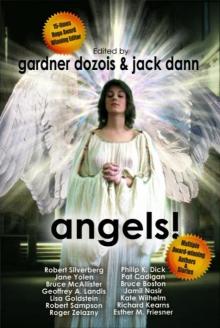 Angels!
Angels! Golden Age of Science Fiction Vol XIII
Golden Age of Science Fiction Vol XIII